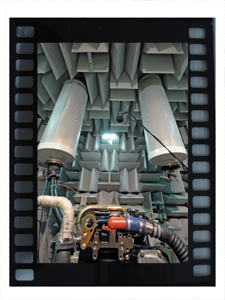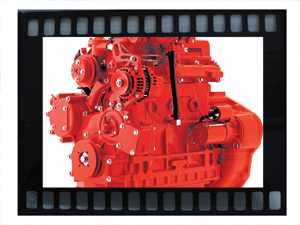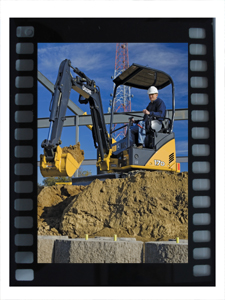Get Engine Smart

It’s a day just like any other day — machines are on the move, the crew’s at work and the job’s getting done. Just then, three men in dark suits step out of a black car with tinted windows demanding records of your equipment. They’re here for the facts — engine emissions.
Why emissions? Because the Tier 4 engine emissions standards are starting to hit the jobsites and not protecting our environment by reducing harmful engine particulate matter (PM) and oxides of nitrogen (NOx) would make jobs scarce when the air is unbreathable.
 Although hard-nosed, straight-laced regulators aren’t knocking on the doors of any jobsites just yet, off-highway Interim Tier 4 engines between 25 and 74 hp have been in machines since 2008 and more Interim Tier 4 requirements are just around the corner. Larger horsepower engines — 175 hp and above — will have to hit Interim Tier 4 standards in 2011, with 75 to 174 hp in 2012.
Although hard-nosed, straight-laced regulators aren’t knocking on the doors of any jobsites just yet, off-highway Interim Tier 4 engines between 25 and 74 hp have been in machines since 2008 and more Interim Tier 4 requirements are just around the corner. Larger horsepower engines — 175 hp and above — will have to hit Interim Tier 4 standards in 2011, with 75 to 174 hp in 2012.
Engine emission compliance falls on the shoulders of engine and machine manufacturers to produce products that meet those emissions standards, but now local legislation is being put in place to make sure that machines are running clean to ensure local air quality regulations that will affect the contractor.
“Compliance is largely the manufacturers’ responsibility. Engine manufacturers must obtain the appropriate Environmental Protection Agency [EPA] certifications, and equipment manufacturers must install the current EPA-certified engines into their machines,” says Doug Laudick, manager of product planning at John Deere Power Systems.
That said, actual emissions enforcement of machines in-use may play out differently in certain areas of the country.
“Enforcement can be achieved in many ways and is based on the many different programs. The short answer is that fleets report the emissions reduction action to the regulating authority — this sometimes includes receipts from vendors — and then the regulating authorities conduct random inspections,” says Glen Chruschiel, program manager of repowering and retrofit for John Deere Power Systems.
The Producers
You’ve probably heard about the Tier engine requirements and are likely already running Tier 2 and Tier 3 engines. The technological leaps to hit those engine emissions standards are nothing to scoff at, but it pales in comparison to the technology advances engine manufacturers have had to make to hit Interim and Final Tier 4.
“The legislation drives a number of new additional technologies such as exhaust after-treatment, high pressure common rail fuel systems and more sophisticated turbochargers,” says Oliver Lythgoe, Tier 4 marketing manager for Perkins Engines. “This will obviously have some impact on the cost of new machines, although in the case of Perkins engines these additional technologies also mean we can offer better fuel economy and response and a dramatic increase in engine torque and power.”
An engine might look like just a muscular metal mass of twisted hoses and valves to you and me, but to the trained eye, it’s the heart of a machine — pumping vital fluids, oils and energy to where it needs it most. To get the engines pumping greener, manufacturers conjured up new technologies such as cooled exhaust gas recirculation (EGR) and selective catalytic reduction (SCR). Both systems aim to reduce nitrogen oxide (NOx), not to mention the diesel particulate filters (DPF), diesel oxidation catalysts (DOC) and variable geometry turbochargers (VTG) to reduce PM.
What do all these fancy acronyms mean to the end-user? On the surface, nothing more than a couple more bucks up front and some additional maintenance. Manufacturers of engines and machines are doing their duty to ensure that the machines they are producing meet the current standard, but contractors will eventually have to take their fleet’s emissions into account due to upcoming legislation.
For example, the most aggressive regulation rule in the United States is the California Air Resources Board’s (CARB) In-Use Rule, adopted in July 2007, which aims to regulate the emissions of off-highway mobile diesel fleets. Off-highway diesel fleets make up a quarter of statewide PM and NOx emissions for mobile diesel sources, according to the CARB Regulation to Reduce Emissions from In-Use Off-Road Diesel Vehicles overview. So CARB is targeting self-propelled diesel-fueled vehicles that cannot be registered and licensed to drive on-road and with engines with a maximum power of 25 hp or greater.

Off-highway fleets, based on their total hp size (small fleets are equal to or less than 2,500 hp, large fleets are greater than 5,000 hp and medium fleets fall in between) must meet an annual fleet emission average level at specified milestone dates or perform annual best available control technology (BACT) — meaning that you turn over 8 to 10 percent of fleet horsepower per year if the fleet doesn’t meet NOx requirements and retrofit 20 percent of fleet hp per year if the fleet doesn’t meet PM requirements.
Each off-highway fleet must register the regulated equipment with the CARB. This includes such things as model year, rated horsepower, engine emissions certification level and any other emissions-reduction modifications (repower and after-treatment) that have been made to the machine.
So for every diesel machine over 25-hp, a contractor must make a record of that machine and report it to CARB. CARB will then issue an equipment identification number for each vehicle, which must be used to label the vehicle within 30 days of receipt.
When is this happening? Right now. The deadline for large fleets in California was April 1, while medium and small fleets have until June 1, and August 1, respectively. For those readers in California, vehicles can be reported via CARB’s online reporting system, DOORS. The reporting system and user guides are available online at: secure.arb.ca.gov/ssldoors/doors_reporting/reporting.php.
“Enforcement staff will then randomly inspect machines operating in the field to be sure that each machine meets the emissions-reduction actions documented in the annual reporting process,” explains Chruschiel.
Californication
If you’re saying to yourself, “That sounds like a lot of fiery hoops those laid back West-coasters have to jump through but that doesn’t affect me” — you’d be wrong, mister. Based on the current non-attainment areas, there are a total of 408 counties that must comply with PM2.5 and/or ozone regulations. Don’t know what a non-attainment area is? It’s defined by the Clean Air Act and Amendments of 1990 as a locality where air pollution levels persistently exceed the National Ambient Air Quality Standards or that contribute to ambient air quality in a nearby area that fails to meet the standards. And the number of those areas is growing — a projected 440 to 550 counties in 2010 and beyond, according to the EPA.
If California is successful in reducing the state’s emission level, other states may fall into line by adopting similar legislation. This doesn’t mean that you have to run out and replace all your machines.
“We know from our parts and remanufacturing businesses that some contractors certainly do indeed use their equipment for many years,” says Lythgoe. “In general, [Perkins] doesn’t anticipate a step change in this behavior. Replacement of fleets is likely to be a gradual process, driven, as today, mainly by equipment wear out and customer demands for better performance, reliability and safety that new machines offer.”
“Contractors with older pieces of equipment do not need to upgrade their fleet unless they are mandated by contracts or local regulations to use cleaner emissions products,” adds Clint Schroer, Cummins Inc., Off-Highway communications manager. “It’s best to contact your local emissions agency or your local distributor for more information if you have other questions.”
Since the EPA has not made a national timeline or plan to phase out older Tiers of engines, it really comes down to local legislation. If you’re in California, a non-attainment area or just want to go green, there are some options other than buying a new fleet. One option is retrofitting engines with a DPF that filters the exhaust gas to reduce PM. As the PM collects in the filter, the exhaust restriction will increase to a point where the filter must find a way to regenerate or burn off this PM.
“Older Tier 0 and some Tier 1 engines output so much PM that, in some applications, DPFs are not a practical solution,” says Chruschiel. “Also, applications that are lightly loaded may also be bad applications for DPFs. It is very important for the after-treatment installer to review each application for not only operational considerations but also other important criteria such as line-of-sight and structural integrity. Some applications simply do not have the physical space to accommodate new technology. For example, some DPFs can be up to three times larger than the muffler they replace.
“The fleet decision-maker must evaluate the capital cost of the emissions-reduction action versus the residual value and remaining life of the machine. Repowering or retrofitting may not always be the best emissions-reduction option. Sometimes machine replacement with the latest certified engine may make the most economic sense in the long run,” Chruschiel adds.
Expanding the realm of retrofit options, Schroer points out that the EPA has said that on-highway solutions may be applied to off-highway applications. With a myriad of options, it makes off-highway retrofitting more complicated.
“The cost of these retrofit products can vary based on the product, but these products range from $2,000 and up,” says Schroer. “[Cummins] strategy is to use its Tier 4 development experience to bring products to the off-highway market that will satisfy the BACT requirement and will encompass various after-treatment technologies.”
Fueling the Green Flame
What about alternative fuel? I’ll tell you about alternative fuel. You’ve heard the biodiesel buzz words, but whether the renewable, oxygenated fuel, made from a variety of agricultural resources like soybeans, actually burns cleaner is still unclear. One thing is certain: While it may reduce PM and carbon monoxide, using a renewable, non-fossil fuel can reduce the carbon footprint of equipment.

You may have also heard of ultra-low sulfur fuel.
As Laudick explains — prior to July 2007, sulfur content levels of typical off-highway diesel fuel were 1,000 to 3,000 parts per million (ppm). Sulfur content in off-highway fuel was reduced to 500 ppm (low sulfur diesel) in 2007 and will be further reduced to 15 ppm (ultra-low sulfur diesel) in 2010. “These new, cleaner fuels will enable the use of exhaust filters on new engines and reduce emissions from the existing diesel engines,” he says.
It’s always a good idea to look toward the future, but you can’t lose sight of the present, especially now. Those engine Tiers that we started hearing about nearly 10 years ago (and thought were so far away) are here today. Putting them at work on the jobsite is going to keep the Earth green and you working. Even if you aren’t in an area or working a job with environmental regulations, knowing what you’re running in your fleet is still a good idea. If the black suits ever come a-knockin’ at your door, you’ll be ready for them.
Jason Morgan is associate editor of Compact Equipment, based in Peninsula, Ohio.
Putting the Pieces in Place
Packing Tier Requirements into Compact Machines
More stringent emissions requirements mean more technology. In smaller machines that means manufacturers have to fit more parts and pieces into already cramped quarters. “Perkins has a particular expertise in engines for compact machines and it is certain that the challenge of packaging Tier 4 systems will be most acute on these smaller machines,” says Oliver Lythgoe, Tier 4 marketing manager for Perkins Engines. “We have, however been working very closely with many of our machine manufacturer customers and have found that it is possible to mitigate this challenge by close collaboration on machine integration and by offering products with a high degree of configurability and flexibility. Higher engine power output also means that it will be possible to select smaller engines.”
Whether it’s an OEM engine manufacturer or a machine manufacturer that makes its own engines — John Deere, Kubota, Cat and Yanmar — joint efforts between an engine and vehicle manufacturer are a must to minimize the impact, allowing for similar-sized compact machines going forward into Interim Tier 4. Especially since the due dates are quickly approaching:
Power Interim Tier 4 Final Tier 4
19 kW – 56 kW (25 hp – 74 hp) 2008 2012*
57 kW – 129 kW (75 hp – 174 hp) 2012 2015
> 130 kW (174 hp) 2011 2014
*For this power band, engine manufacturers had the option to move from Tier 2 to either Tier 3 or Interim Tier 4 regulations in 2008. If manufacturers choose to go Interim Tier 4 early, this means they have to meet more stringent regulations sooner and therefore get an allowance when moving to Final Tier 4. Manufacturers that chose to move to Tier 3 must comply with Final Tier 4 regulations in 2012. Manufacturers that chose to move to Interim Tier 4 must comply with Final Tier 4 regulations in 2013.

Comments are closed here.